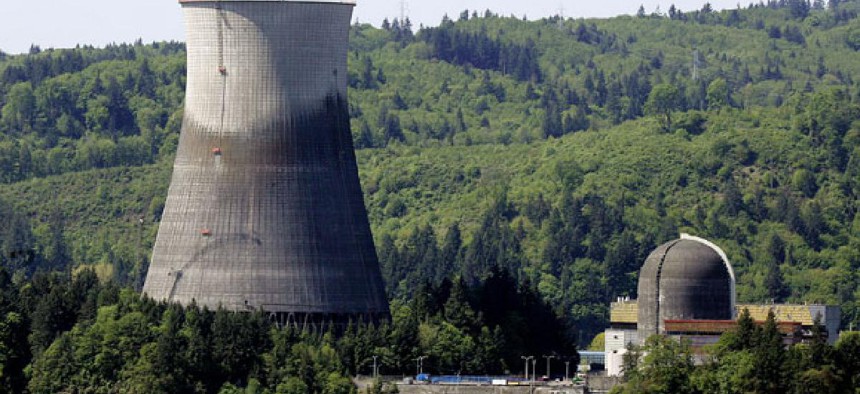IG says Energy Department facilities still have cyber weak spots

Don Ryan/AP file photo
The inspector general found that the total number of identified digital security weaknesses had dropped from 56 to 38 vulnerabilities after fiscal 2011.
The U.S. Energy Department and its National Nuclear Security Administration have addressed most but not all digital security weaknesses highlighted by an internal audit in 2011, according to the DOE inspector general.
The IG report covering fiscal 2012 and issued earlier this month notes the department and the semiautonomous agency that oversees the U.S. nuclear arsenal had dealt with 40 of the 56 vulnerabilities found during the fiscal 2011 assessment.
The identities of specific NNSA facilities and other DOE sites found to have vulnerabilities to cyber strikes, along with the particular weaknesses identified, were not included in the public analysis due to security concerns, the report states. "Site and program officials were provided with detailed information regarding respective vulnerabilities identified and, in many instances, corrective actions were initiated."
The inspector general found that the total number of identified digital security weaknesses had dropped from 56 to 38 vulnerabilities after fiscal 2011. However, 22 of the 38 weaknesses were found in the budged year that ended on Sept. 30.
"Our review of the Offices of the Undersecretary for Nuclear Security, Undersecretary for Science and Undersecretary of Energy organizations identified various control weaknesses related to access controls, vulnerability management, system integrity of web applications, planning for continuity of operations and change control management," the IG report states.
The new audit notes that the Energy Department and its nuclear security agency had initiated creation of the RightPath program, which is intended to improve digital protections by bringing various DOE agencies' cyber security strategies into alignment. The department also provided training to personnel on proper security practices when accessing e-mail, among other measures.
The report faults the department for not following available best-practice solutions to address its cyber weaknesses, which have been highlighted in previous IG investigations. "The weaknesses identified occurred, in part, because department elements had not ensured that cyber security requirements were fully developed and implemented. In addition, programs and sites had not always effectively monitored performance to ensure that appropriate controls were in place."
Energy officials agreed with the inspector general's conclusions and advice for improving department-wide cyber security.
Richard Bejtlich, of the cyber security company Mandiant, told Foreign Policy magazine the IG assessment "reminded me of the results of most vulnerability assessment reports for any decently sized organization."
"Vulnerabilities of all kinds are found, involving unpatched systems, code waiting to be exploited and the like. The next report will look the same," he said. "It would have been much more useful if DOE had brought a third party to each of its sites to determine 'what intruders are actively exploiting those sites right now,' then prioritize incident response and countermeasures to frustrate the adversary."
Bejtlich predicted "another round of trying to fix every problem, while intruders watch and evade any security 'improvements' that DOE applies."
NEXT STORY: John McAfee is blogging on the lam






